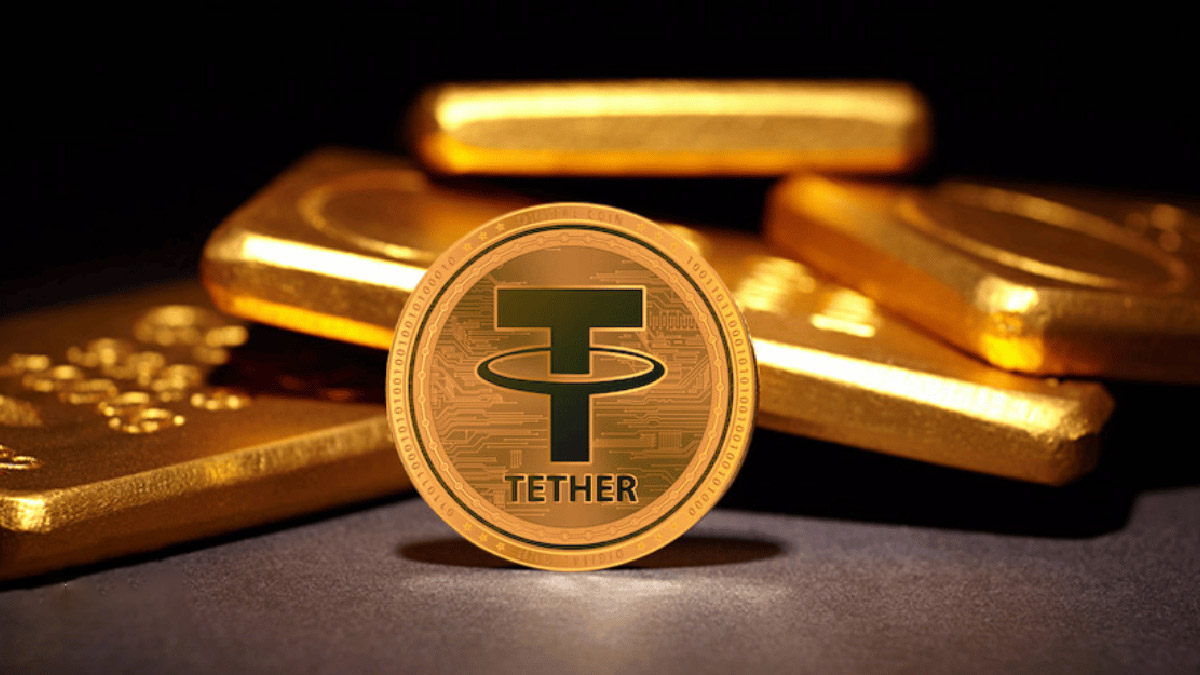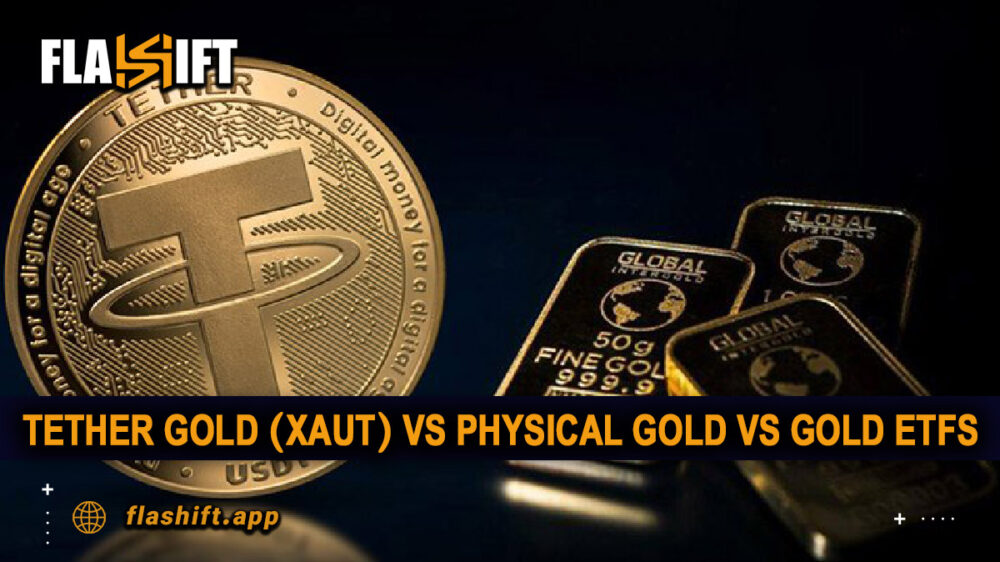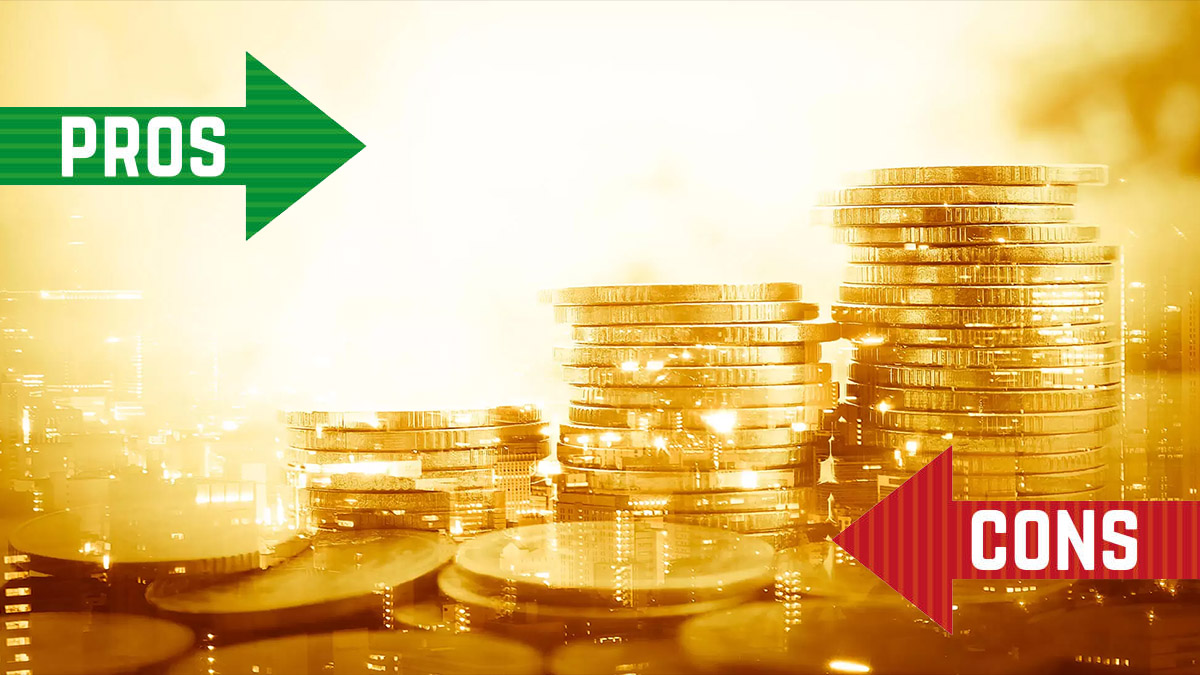Tether Gold (XAUt) vs Physical Gold vs Gold ETFs | In times of economic uncertainty, gold has always stood out as a reliable store of value. But today, investors are no longer limited to traditional methods of owning gold. With the rise of blockchain technology and digital assets, Tether Gold (XAUt) has entered the scene, offering a new way to invest in gold—one that combines the stability of physical bullion with the speed and accessibility of crypto.
At the same time, Gold ETFs have gained popularity for their convenience and liquidity, providing exposure to gold prices without the need for storage or handling. So, how does XAUt compare to holding physical gold or investing in gold ETFs? Which option aligns best with your financial goals, risk appetite, and investment style?
In this post, we’ll break down the pros, cons, and unique features of each approach to help you decide which form of gold investment is right for you.
Introducing Tether Gold (XAUt) vs Physical Gold vs Gold ETFs
In today’s fast-evolving financial landscape, investors have multiple avenues to gain exposure to gold. Whether you’re looking for digital convenience, physical ownership, or a market-traded instrument, understanding the differences between XAUt vs physical gold and XAUt vs ETF can help you choose the right fit for your portfolio. Let’s explore what each option offers.
What is Tether Gold (XAUt)?
Tether Gold (XAUt) is a blockchain-based digital asset backed by real physical gold. Each XAUt token represents one troy ounce of gold securely stored in a Swiss vault. It offers the transparency and security of blockchain combined with the intrinsic value of gold.
XAUt allows investors to buy, sell, and transfer gold-backed assets 24/7 without the hassle of physical delivery or traditional intermediaries. As a result, Tether Gold investment is gaining traction among tech-savvy investors seeking a hedge against inflation with added liquidity and accessibility. Some key features are as bellow:
- Backed 1:1 by physical gold
- Redeemable (in large amounts) for actual gold
- Tradable like any cryptocurrency
- Stored securely in Swiss vaults
- Offers fast, global transactions
Read About “How to Buy Tether Gold (XAUt)” and store gold in your digital wallet.
What is Physical Gold?
Physical gold is the oldest form of gold investment. Physical gold includes coins, bars, and bullion stored in a vault or a safe. Physical gold has been valued over the centuries for its stability and inherent worth, particularly when times are uncertain financially.
Although it offers a feeling of ownership and protection of value over the long term, physical gold investment has limitations regarding storage cost, lack of liquidity, and verification and transportation difficulties. Key features:
- Tangible asset with no counterparty risk
- Requires secure storage (personal or third-party vaults)
- Limited liquidity (compared to digital alternatives)
- Typically incurs premiums and handling fees
What is a Gold ETF?
A Gold Exchange-Traded Fund (ETF) is a financial instrument that tracks the price of gold. Gold ETFs provide a cost-effective and accessible way to invest in gold. Investors can buy ETFs on stock exchanges.
Investors in ETFs don’t own actual gold; instead, they own shares in a fund that holds or tracks gold-related assets. While ETFs offer high liquidity and low fees, they are subject to market risks, management fees, and counterparty exposure.
- Traded like stocks on major exchanges
- Backed by gold or gold-related financial instruments
- Highly liquid and easy to access
- Subject to management and brokerage fees
Key Differences Between the XAUt, Physical Gold and Gold ETF

When comparing XAUt vs physical gold and XAUt vs ETF, it’s essential to understand how they differ across liquidity, storage, fees, and volatility. Here’s a quick breakdown:
Liquidity
Tether Gold (XAUt) offers 24/7 global trading on crypto platforms, making it the most liquid option. Physical gold is harder to sell and often involves in-person transactions. Gold ETFs are liquid during market hours but are limited to traditional trading systems.
Winner: XAUt for around-the-clock, borderless liquidity.
Storage and Custody
XAUt is backed by real gold stored in Swiss vaults, with no need for personal storage. Physical gold requires secure storage, which can be costly and risky. ETFs don’t give you physical ownership—just fund exposure.
Winner: XAUt, combining physical gold security with digital convenience.
Fees and Accessibility
Tether Gold investment has minimal fees—just small transaction costs. Physical gold comes with purchase premiums, storage, and insurance. ETFs are easy to access via brokerages but include management fees.
Winner: Tie between XAUt (for crypto users) and ETFs (for traditional investors).
Volatility
All three track gold prices, but XAUt may show small fluctuations due to exchange dynamics. Physical gold is the most stable, but pricing varies by seller, and ETFs can be affected by fund performance and market sentiment.
Winner: Physical gold for pure stability, but XAUt is close behind.
XAUt vs Physical Gold vs Gold ETFs Comparison | Take a Quick Look
| Feature | Tether Gold (XAUt) | Physical Gold | Gold ETFs |
| Ownership Type | Digital token backed 1:1 by real gold | Direct ownership of physical bullion | Shares in a fund that holds gold or gold-related assets |
| Storage | Stored in Swiss vaults by a custodian | Requires personal or third-party secure storage | Held by the ETF provider |
| Liquidity | High (can be traded 24/7 on crypto exchanges) | Low (requires physical handling to sell/trade) | High (traded during market hours like stocks) |
| Accessibility | Global, instant, and borderless via blockchain | Physical access only; location-dependent | Easily accessible via brokerage accounts |
| Transaction Speed | Near-instant transfers via blockchain | Slow (requires physical delivery/transportation) | Fast (market-based transactions) |
| Cost & Fees | Low fees; blockchain gas fees may apply | Premiums, storage, insurance, and shipping costs | Management and brokerage fees |
| Security | Secured by blockchain and institutional vaults | Security depends on owner (can be stolen or lost) | Fund security depends on custodian and management |
| Redeemable for Gold | Yes (minimum quantity applies for redemption) | Yes (you already own the gold) | No direct redemption—ETF holders don’t get physical gold |
| Transparency | On-chain verification and full audit trails | Depends on dealer/institutional trust | Varies by ETF; not fully transparent |
| Counterparty Risk | Low (backed by gold, verified reserves) | None (you own the asset directly) | Medium (subject to fund and market risks) |
Pros and Cons of XAUt, Physical Gold and Gold ETF
Tether Gold (XAUt)
Pros:
- Backed 1:1 by physical gold
- 24/7 global trading
- Low fees, fast transfers
- No personal storage needed
Cons:
- Requires basic crypto knowledge
- Limited redemption for physical delivery
Physical Gold
Pros:
- Tangible asset, no digital reliance
- No counterparty risks
- Long-standing wealth preservation
Cons:
- Storage, insurance, and security challenges
- Difficult to liquidate quickly
Gold ETFs
Pros:
- Easy to trade via stock brokerages
- Highly liquid during market hours
- Low barrier to entry
Cons:
- No physical gold ownership
- Fund and management risks
What Type of Investor Should Choose Each?
Choosing the best way to invest in gold depends on your goals, risk tolerance, and preferred platforms.
- Choose XAUt if you value digital convenience, want direct gold backing, and are comfortable using crypto exchanges. It’s ideal for tech-savvy investors or those seeking a hedge in a digital portfolio.
- Choose Physical Gold if you prioritize tangible assets and want to store wealth outside the financial system. It is excellent for long-term holders and legacy planning.
- Choose Gold ETFs if you prefer traditional markets, want to trade gold like stocks and value simplicity. They are best for stock market investors looking to compare gold options without dealing with storage or wallets.
Expert Opinions on XAUt vs Gold
The debate between XAUt and physical gold and XAUt and ETF has garnered attention from experts across traditional and digital finance sectors. Crypto analysts view the Tether Gold investment as a breakthrough that offers the best of both worlds: the stability of gold and the benefits of blockchain technology.
For those seeking decentralized control, XAUt provides a compelling option. However, traditional gold experts emphasize the security and tangible value of owning physical gold, free from digital risks and counterparty exposure.
Financial advisors often recommend Gold ETFs for beginners due to their ease of access and low fees but acknowledge the rising relevance of XAUt as a more secure, digital alternative for those who seek direct gold ownership.
While physical gold remains a safe bet for conservative investors, Tether Gold (XAUt) is quickly becoming a popular choice for digital-first investors.
Conclusion: What’s the Best Gold Investment in 2025?
The best 2025 gold investment depends on your preferences. If you prefer digital ownership, liquidity, and low fees, Tether Gold (XAUt) is the most futuristic option. It presents blockchain-backed gold in a convenient, accessible package. Physical gold is still a sound option for physical control and long-term stability despite the storage fees and hassle.
Gold ETFs are ideal for those who prefer simplicity and immediate market access but don’t have direct exposure to physical gold. Ultimately, the best investment will depend on your goals—whether you want the flexibility of XAUt, the security of physical gold, or the convenience of ETFs.
FAQ
- Can I redeem Tether Gold (XAUt) for real gold?
Yes, but only in large amounts (usually 430+ XAUt) and through authorized providers. Most retail investors use it for digital exposure rather than redemption.
- Does holding a Gold ETF mean I own actual gold?
No. You own shares in a fund that may or may not be backed by physical gold. You’re exposed to gold’s price, not the gold itself.
- Is XAUt affected by crypto market volatility?
Only slightly. While XAUt is traded on crypto exchanges, its value closely tracks the price of gold—not cryptocurrencies like Bitcoin or Ethereum.
- How private is each option for gold investment?
XAUt offers more privacy than ETFs, especially on decentralized exchanges. Physical gold offers the highest privacy if bought off the grid. ETFs are the most trackable.
- Which option offers better global accessibility?
Tether Gold (XAUt) is the most globally accessible, as it can be sent and received instantly across borders with no intermediaries. Physical gold and ETFs often face regulatory and logistical barriers.








